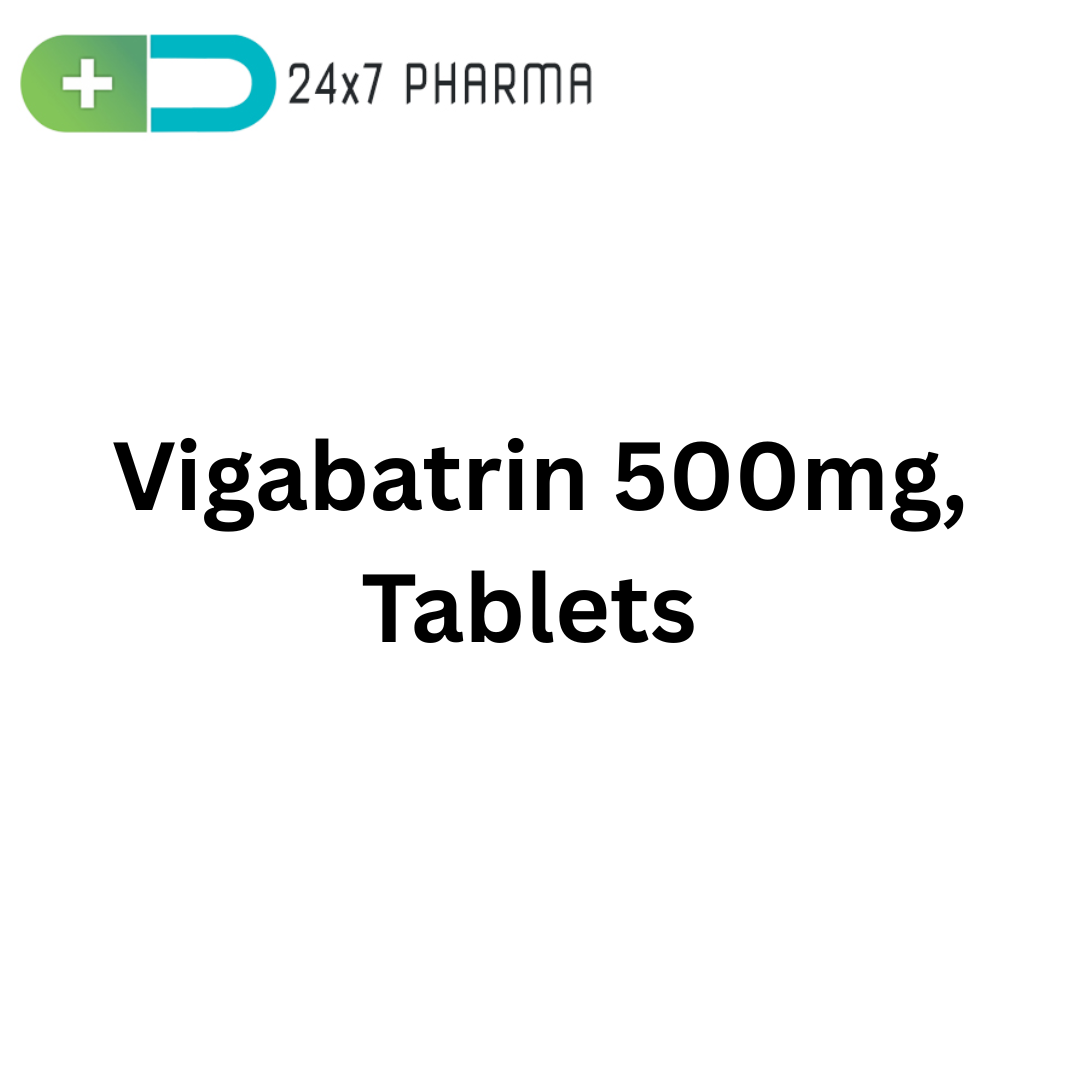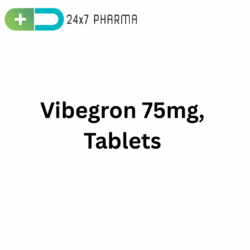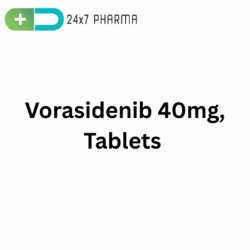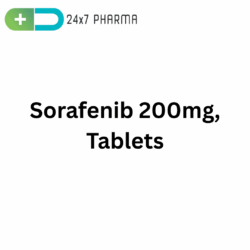LuciViga 500mg, Vigabatrin Tablets
LuciViga 500mg contains Vigabatrin, an antiepileptic medication used primarily to treat seizures. It is especially beneficial for patients who do not respond to first-line therapies. Developed as a second-generation antiepileptic, LuciViga plays a critical role in managing epilepsy, particularly infantile spasms and refractory complex partial seizures.
Vigabatrin has a unique mechanism of action that distinguishes it from other anti-seizure medications, making it a valuable addition to seizure management protocols.
What is LuciViga 500mg?
LuciViga 500mg is a prescription medicine that contains Vigabatrin, an antiepileptic agent. It is primarily used to treat:
- Children’s infantile spasms (ages two months to two years)
- Refractory complex partial seizures in adults and children over 10 years who have not responded to other treatments
- It is not a first-line drug but is recommended when other medications fail to provide adequate seizure control.
How It Works / Mechanism of Action
Vigabatrin works against epilepsy by permanently blocking the GABA transaminase (GABA-T) enzyme. This is how it operates:
- In the central nervous system, GABA (gamma-aminobutyric acid) is the main inhibitory neurotransmitter.
- Normally, the enzyme GABA-T breaks down GABA.
- Vigabatrin blocks this enzyme, leading to increased levels of GABA in the brain.
- Elevated GABA activity inhibits abnormal electrical activity, thereby reducing the frequency and intensity of seizures.
- This mode of action is different from many other antiepileptic drugs, offering a novel pathway for controlling seizures.
How to Use / Indications
LuciViga is indicated for:
- Infantile Spasms (IS) – As monotherapy in children between 2 months and 2 years old.
- Refractory Complex Partial Seizures (CPS) – As adjunctive therapy in adults and children (10 years and older) when other treatments have failed.
- It should always be used under the supervision of a neurologist or epilepsy specialist due to the potential for serious side effects.
How to Take / Dosage
Adults (for CPS):
- Starting dose: 500 mg twice daily
- May be titrated up weekly by 500 mg/day
- Maximum dose: 3,000 mg/day (1,500 mg twice daily)
- Pediatrics (for Infantile Spasms): Dose is weight-based, typically 50-150 mg/kg/day divided into two doses
Administration Tips:
- Can be taken with or without food
- Tablets may be crushed and mixed with water or soft food for children or patients with difficulty swallowing
- Always follow the prescribed regimen and do not stop abruptly
Other Dosage Forms
- Oral solution: Often used for infants and small children who cannot swallow tablets
- Powder for oral solution: Convenient for flexible pediatric dosing
Side Effects
Common Side Effects:
- Fatigue, drowsiness
- Weight gain
- Dizziness
- Headache
- Visual field defects (peripheral vision loss)
Serious Side Effects:
- Permanent vision loss (boxed warning)
- Behavioral changes (agitation, depression, psychosis)
- Sedation and fatigue
- Suicidal thoughts or behavior
Note: Regular eye exams are mandatory during therapy due to the risk of irreversible vision damage.
Storage
- Store below 25°C (77°F)
- Keep in the original container, tightly closed
- Protect from light and moisture
- Keep out of reach of children
Benefits
- Effective seizure control in refractory cases
- Monotherapy option for infantile spasms
- Unique mechanism offers additional benefits in patients who do not respond to other antiepileptic drugs
- May help reduce the frequency and severity of seizures significantly
- Despite its risks, for many patients with treatment-resistant epilepsy, LuciViga may offer improved quality of life and seizure control.
Prescription
- A prescription-only medicine (Rx), LuciViga 500mg is categorize as a Schedule H substance in India and similarly restricte in many other nations.
- Only a neurologist or pediatric neurologist should prescribe it.
- Due to the risk of visual loss, healthcare providers must ensure patients are regularly monitore and counselle
- Baseline and periodic ophthalmologic exams are a requirement
Drug Interactions
Vigabatrin can interact with several other medications:
Major interactions:
- May reduce serum concentrations of phenytoin
- CNS depressants (e.g., alcohol, sedatives) may enhance sedative effects
Moderate interactions:
- May alter the effect of antipsychotic medications
- Avoid using with drugs known to cause visual disturbances
- Always disclose all medications, supplements, or herbal products to the prescribing physician.
FAQs
Is LuciViga safe for infants?
Yes, it is approve for treating infantile spasms in children aged 2 months to 2 years, under strict supervision.
How soon will it start working?
Some patients may notice improvement in seizures within a few days to weeks, but full effects may take longe
Is this medication addictive?
No, it is not habit-forming, but should only be use under medical guidance.
How is the drug monitore?
Through routine ophthalmologic exams, clinical monitoring, and seizure diaries.
Conclusion
A powerful antiepileptic drug called LuciViga 500mg (Vigabatrin) is used to treat refractory complex partial seizures and infantile spasms. While it offers a unique and effective mechanism to control seizures, it carries significant risks, particularly vision loss.
Strict adherence to dosage, regular eye monitoring, and professional medical supervision are crucial for safe and effective treatment. For patients who have not responded to standard therapies, LuciViga may offer a new lease on life, making seizure control more attainable and quality of life significantly better.




